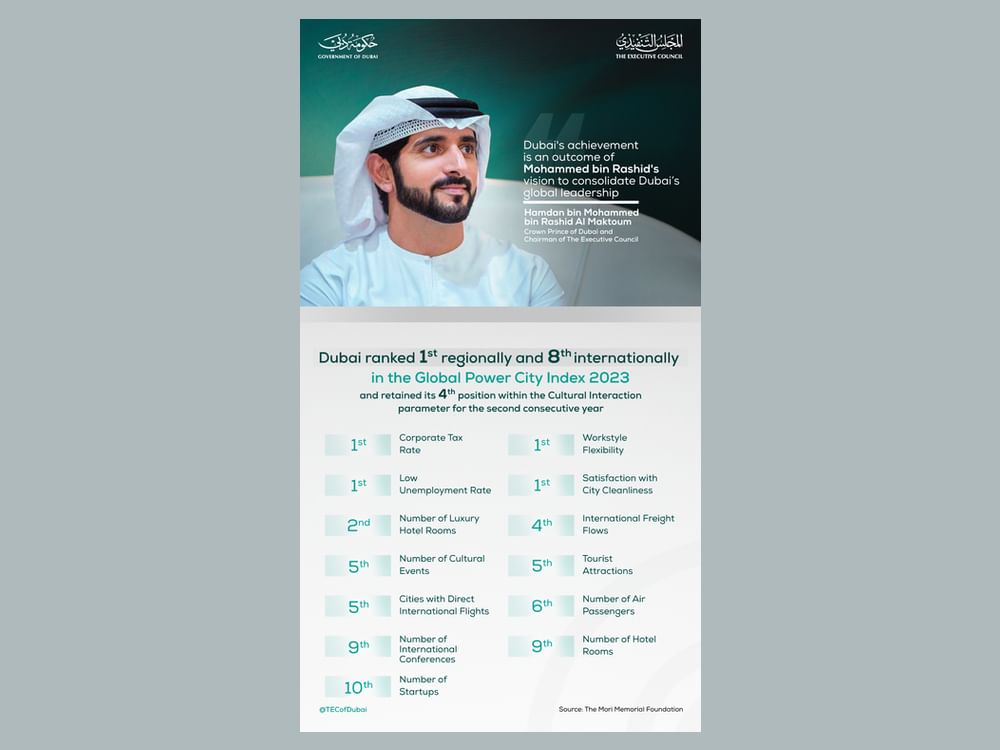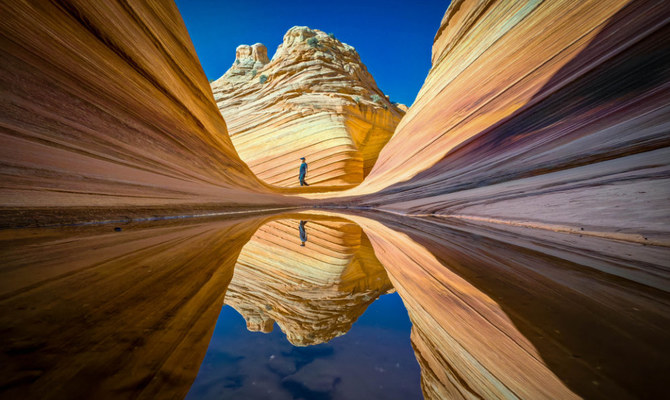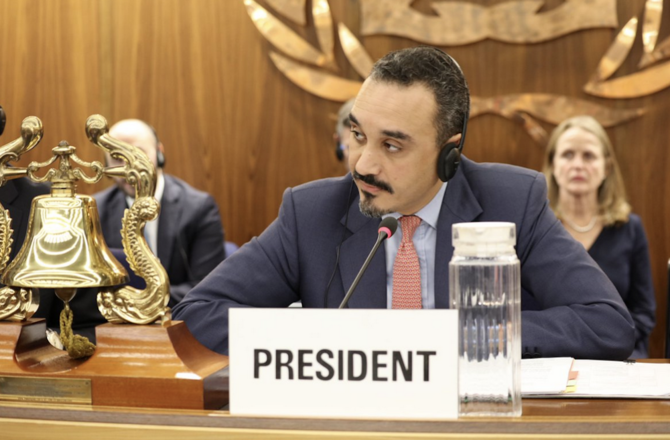Dubai has been ranked among the top 10 cities in the Global Power City Index (GPCI) 2023, a prestigious and internationally recognised league table issued by the Mori Memorial Foundation’s Institute for Urban Strategies in Japan. The new ranking makes Dubai the first city in the Middle East to attain this prestigious global recognition.
In the 2023 index, which ranks major cities on to their ‘magnetism’ – or power to attract people, capital and enterprises – Dubai climbed three places to eighth overall. The achievement cements Dubai’s position as a leading global city, driven by the vision of its leadership and the collective determination of its citizens and residents.
H.H. Sheikh Hamdan bin Mohammed bin Rashid Al Maktoum, Crown Prince of Dubai and Chairman of Dubai Executive Council, said that Dubai’s progress in the Global Power City Index 2023 reflects the dedicated efforts to realise the vision of His Highness Sheikh Mohammed bin Rashid Al Maktoum, Vice President, Prime Minister and Ruler of Dubai, to attain top global positions across various vital sectors and establish Dubai as the world’s best city to work and live in.
Congratulating Sheikh Mohammed bin Rashid on the emirate’s achievement as the first city in the Middle East to make it into the prestigious list, Sheikh Hamdan said, “There is no limit to our ambitions, and with the unwavering dedication of our nation’s people, we will continue to strengthen Dubai’s position as a model for the cities of the future, achieving milestones that set the global standard. Dubai’s excellence and accomplishments stem from the visionary leadership of His Highness Sheikh Mohammed bin Rashid Al Maktoum, propelling the city at an accelerated pace towards the pinnacle of leadership and excellence.”
Sheikh Hamdan bin Mohammed urged both the private and public sectors in Dubai to persist in their efforts to establish Dubai as a sustainable development model that places the development of people’s capabilities and enhances their quality of life at the forefront of its priorities. He underscored the government’s ongoing commitment to achieving further milestones in various global competitiveness indicators and consolidating a knowledge and creative economy through the adoption and implementation of modern legislative frameworks and regulatory rules, carefully crafted to address global changes. These efforts affirm Dubai’s capability to efficiently keep pace with the evolving landscape, he said.
“To cement Dubai’s position as a global economic powerhouse and its role as a catalyst for growth, we must cultivate world-class working environments that empower our national talent and attract the brightest minds from across the globe. This commitment to excellence will propel comprehensive development, establishing Dubai as a global benchmark for sustainable economic prosperity and resilience,” His Highness added.
In the 2023 index, Dubai retained its fourth position for the second consecutive year within the Cultural Interaction parameter, surpassing Tokyo, Istanbul, Madrid, Moscow, and Singapore. Meanwhile, London, New York, and Paris maintained the top three spots. The ranking is an outcome of Dubai’s commitment to enhancing its status as a cultural destination, a major hub for creativity, and one of the best cities in which to live and work. This effort aligns with Dubai’s cultural vision that aims to cement the emirate’s position as a global centre for culture, an incubator for creativity, and a thriving hub for talent. Dubai has also maintained its top regional ranking in Cultural Interaction.
The Global Power City Index (GPCI), which has been published annually since 2008, is a global benchmark for measuring the performance and competitiveness of global cities. It is used by governments, businesses, and individuals to make decisions related to investment, immigration, and travel. The index reflects the dynamic nature of cities and their ability to adapt and thrive in the face of global challenges. It provides a comprehensive overview of cities’ standing and impact on the global stage. The index comprises six parameters, including Economy, Research and Development, Cultural Interaction, Liveability, Environment, and Accessibility.
Dubai progressed in several sub-parameters within Cultural Interaction, ranking first globally in the Number of Foreign Residents and second in the Number of Luxury Hotel Rooms, reinforcing the emirate’s cultural offering, creative environment, and diverse tourist attractions.
The index further revealed Dubai’s excellence and leadership across various sub-indicators, encompassing work flexibility, low unemployment rate, and city cleanliness. It also highlighted Dubai’s success in hosting global exhibitions and events, attracting visitors and tourists, and increasing the influx of travellers through its airports.
Today, Dubai stands as one of the world’s most renowned cities in terms of economies, finance, business, tourism and travel. It is also one of the most successful cities in attracting talent, with more than 200 nationalities from various backgrounds living together in a tolerant and welcoming society. Dubai is also one of the most popular tourist destinations in the world.
source/content: wam.ae (headline edited)
____________

____________________________________________
DUBAI, UNITED ARAB EMIRATES (U.A.E)


